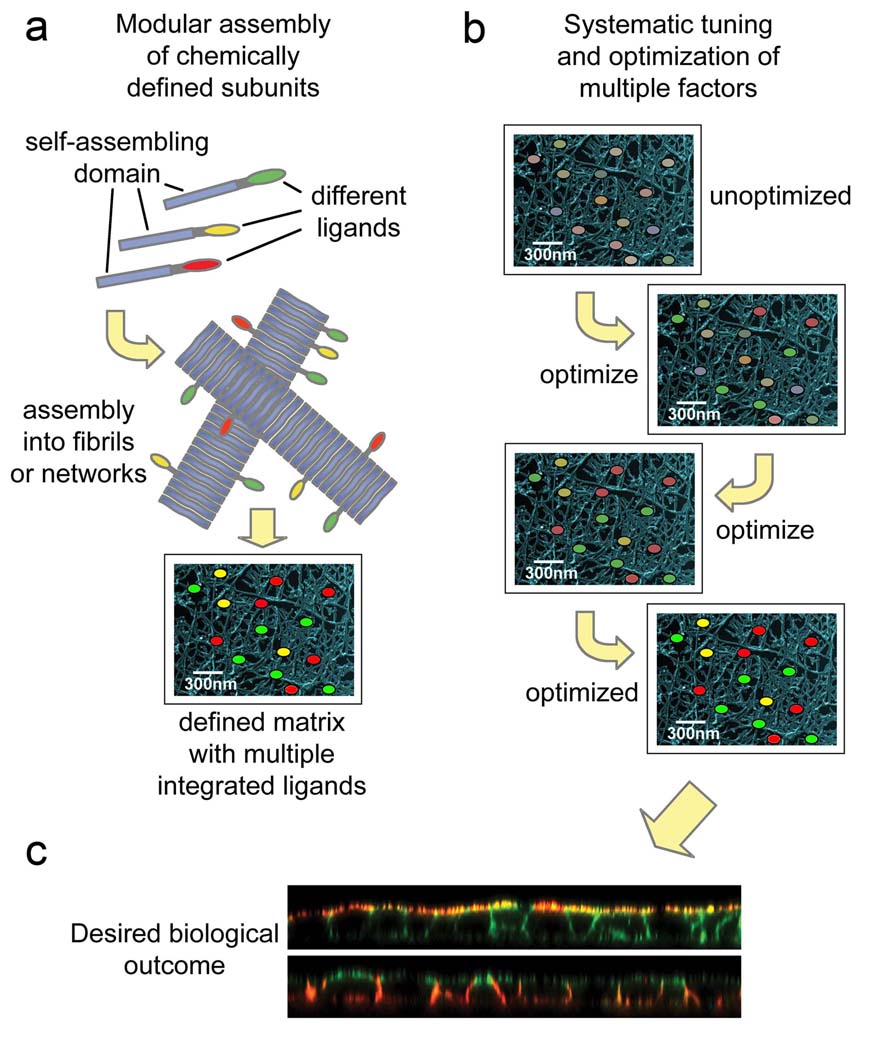Figure 1.
Self-assembly enables a modular approach to biomaterials construction. The co-assembly of chemically defined molecular elements (a) promises to facilitate more systematic optimization and efficient exploration of the large parameter space of cell-biomaterials interactions (b) in order to experimentally identify those combinations of parameters that most effectively drive a desired biological response, for example the formation of a polarized epithelium (c). In panel (c), polarized MDCK epithelial cells are shown with confocal microscopy. The top image shows apical staining (red, gp135), and the bottom image shows basolateral staining (red, E-cadherin). In both images, F-actin is counterstained with phalloidin (green).

